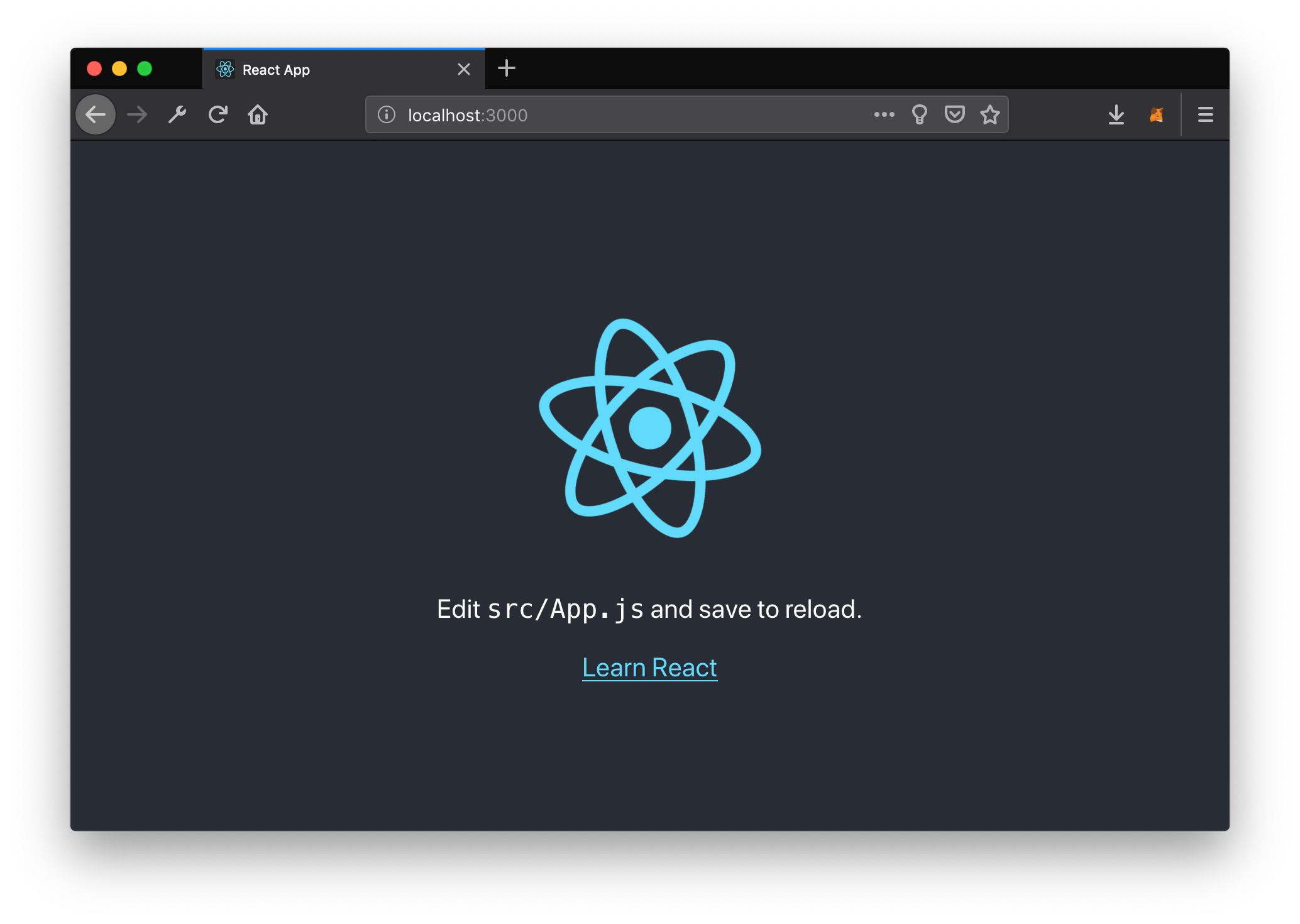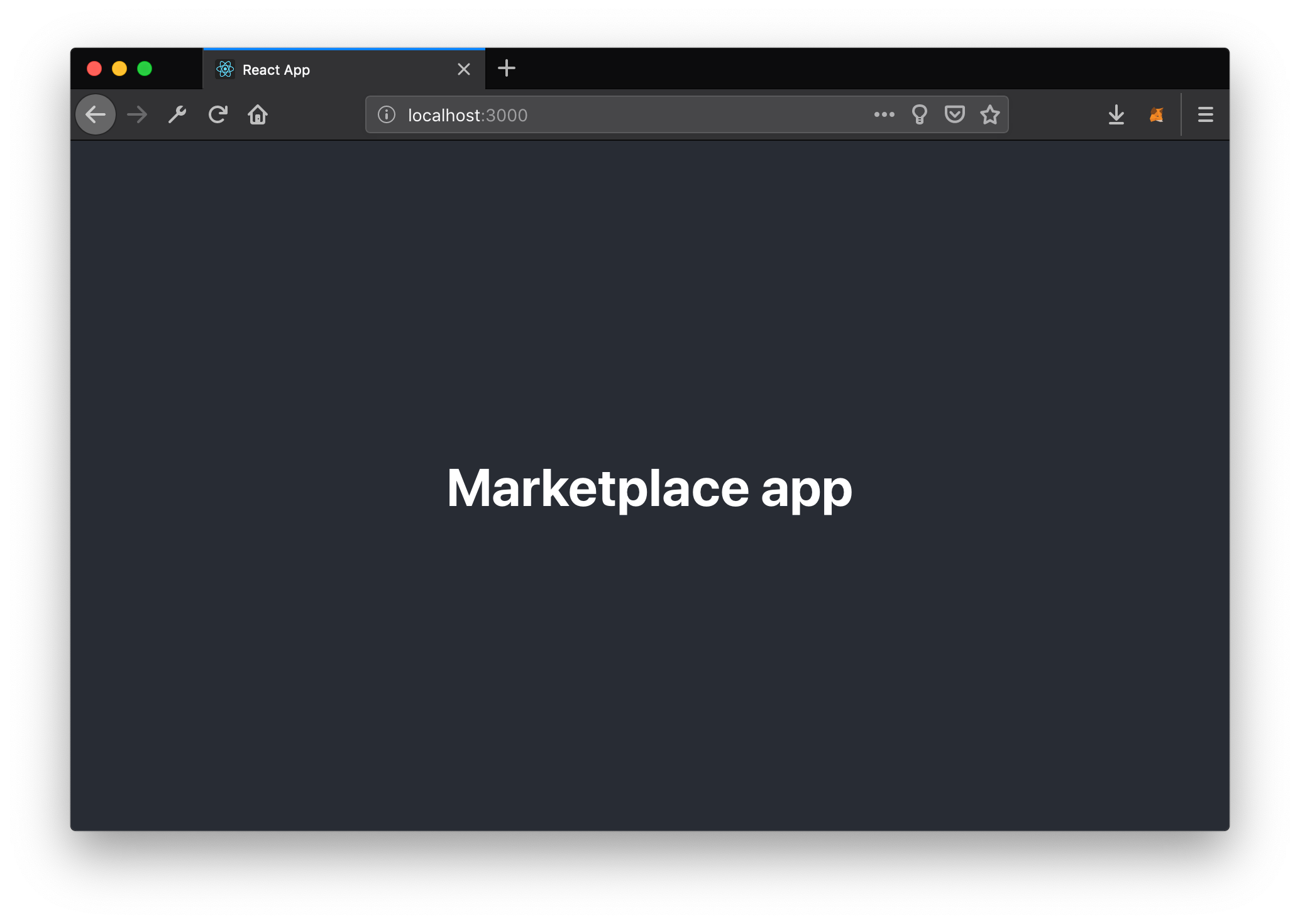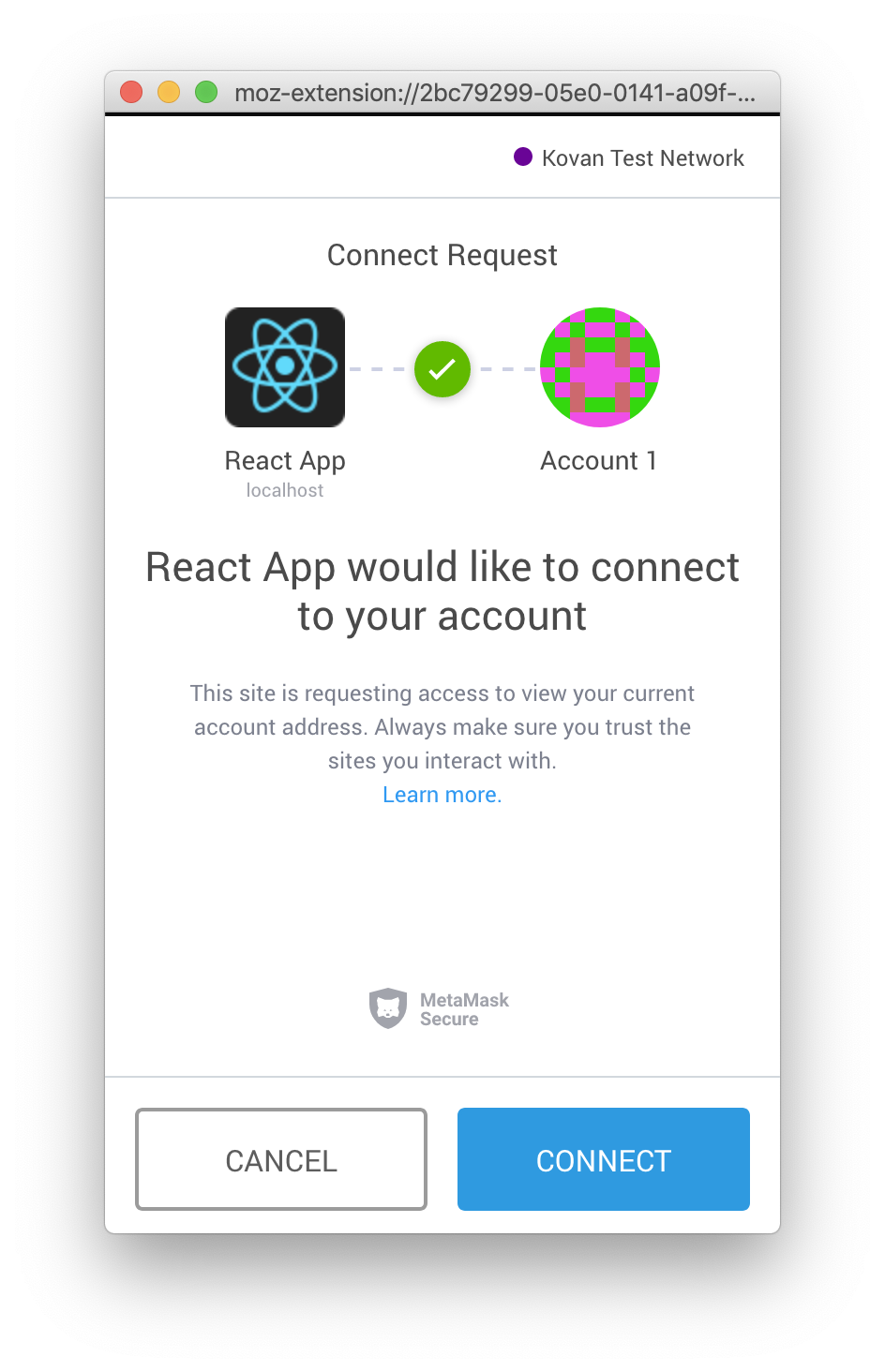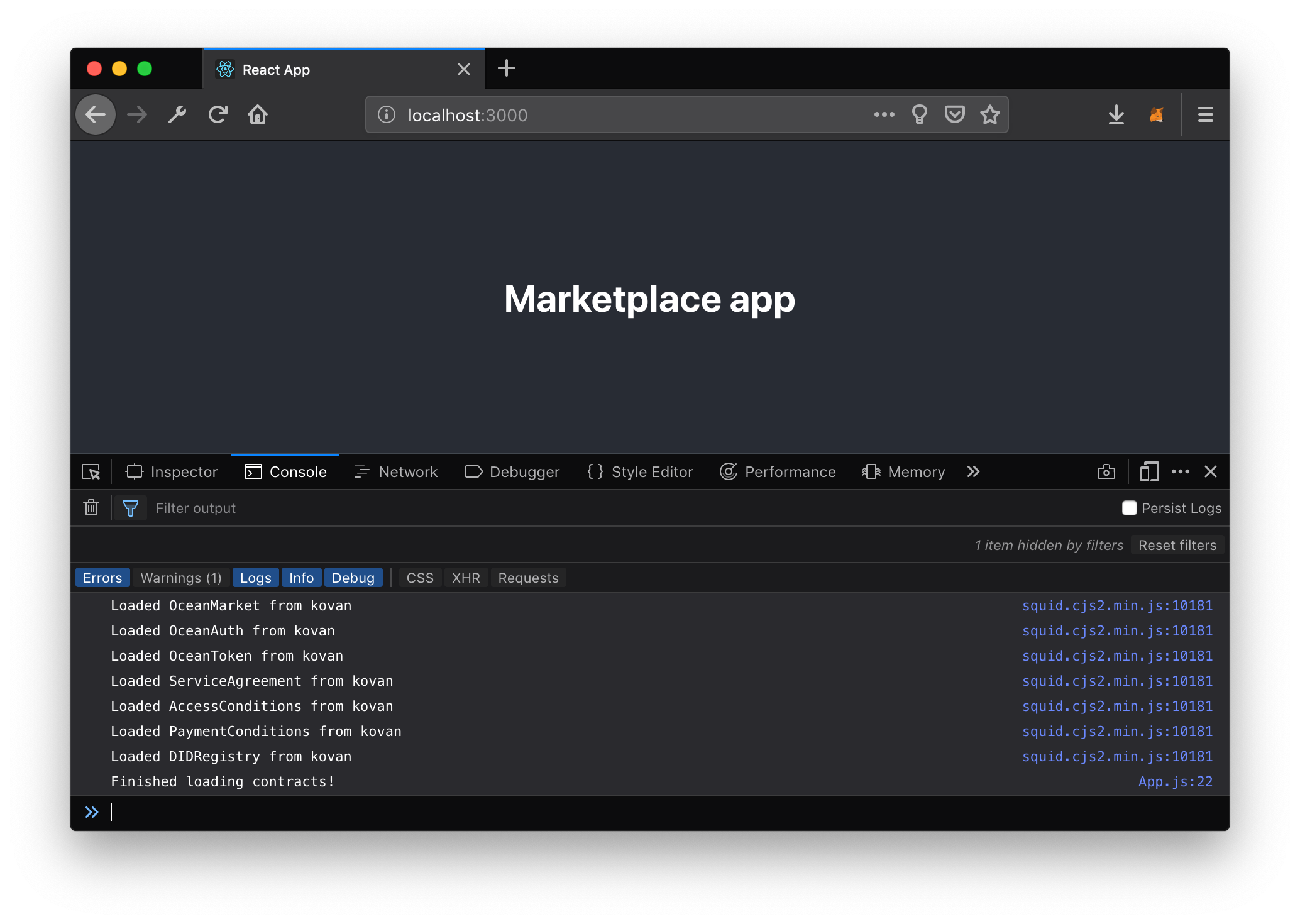4.5 KiB
| title | description |
|---|---|
| React App Setup | This tutorial shows how you can build a basic [React](https://reactjs.org/) app with [Create React App](https://github.com/facebook/create-react-app) that uses the squid-js JavaScript package to publish a data set, get a data set, and more. |
Requirements
Node.js>= 10 is installed. You can check usingnode -vnpm>= 5.2 is installed. You can check usingnpm -v- Do the tutorial to Set Up Azure Storage.
- Use a browser with MetaMask and some Ether in your account. See the tutorial about getting Ether and Ocean Tokens for testnets.
- Git clone the oceanprotocol/docker-images repository, then in that directory:
- Edit the
brizo.envfile and set allAZURE_... values. - Run
./start_ocean.sh --no-pleuston --local-kovan-node. This runs several Ocean services locally, including a local Parity Ethereum node connected to the Kovan Testnet.
- Edit the
New Create React App
First, kick start your new React app by creating a boilerplate with Create React App:
npx create-react-app marketplace
This will create a folder named marketplace with a boilerplate React app. Go into that new folder and add the Ocean Protocol JavaScript library and Web3 packages to the app's dependencies:
cd marketplace/
npm install @oceanprotocol/squid web3
At this point you can already run npm start which starts the app in your browser at localhost:3000:
Add Markup & Web3
Let's make it ours, open src/App.js and replace the whole source with:
import React, { Component } from 'react'
import './App.css'
class App extends Component {
render() {
return (
<div className="App App-header">
<h1>Marketplace app</h1>
</div>
)
}
}
export default App
Below the import './App.css' line, let's import the packages we installed, set up web3 and unlock MetaMask accounts (if locked):
import { Ocean } from '@oceanprotocol/squid'
import * as Web3 from 'web3'
const web3 = new Web3(window.web3.currentProvider)
window.ethereum.enable()
After those steps you should see this, and MetaMask should have asked you to allow access to your account:
Create Ocean instance
Now that we are successfully connected with Web3, we can setup our Ocean instance.
At the beginning of your component, create a new Ocean instance with all configuration within the componentDidMount lifecycle method. All Ocean Protocol operations can be executed from this Ocean instance.
async componentDidMount() {
this.ocean = await new Ocean.getInstance({
web3Provider: web3,
nodeUri: "http://localhost:8545",
aquariusUri: "http://localhost:5000",
brizoUri: "http://localhost:8030",
parityUri: "http://localhost:8545",
secretStoreUri: "http://localhost:12001",
threshold: 0,
password: "secret",
address: "0x068ed00cf0441e4829d9784fcbe7b9e26d4bd8d0",
})
console.log("Finished loading contracts!")
}
Final Result
That's it, if you have no errors in your console.log then you have successfully initialized an Ocean instance in your brand new React app and you are ready for the next part of this tutorial.
Here is the full source of src/App.js that you should have if you followed this tutorial:
import React, { Component } from 'react'
import './App.css'
import { Ocean } from '@oceanprotocol/squid'
import * as Web3 from 'web3'
const web3 = new Web3(window.web3.currentProvider)
window.ethereum.enable()
class App extends Component {
async componentDidMount() {
this.ocean = await new Ocean.getInstance({
web3Provider: web3,
nodeUri: 'http://localhost:8545',
aquariusUri: 'http://localhost:5000',
brizoUri: 'http://localhost:8030',
parityUri: 'http://localhost:8545',
secretStoreUri: 'http://localhost:12001',
threshold: 0,
password: 'secret',
address: '0x068ed00cf0441e4829d9784fcbe7b9e26d4bd8d0'
})
console.log('Finished loading contracts!')
}
render() {
return (
<div className="App App-header">
<h1>Marketplace app</h1>
</div>
)
}
}
export default App
Move on to Publish a Data Set.



